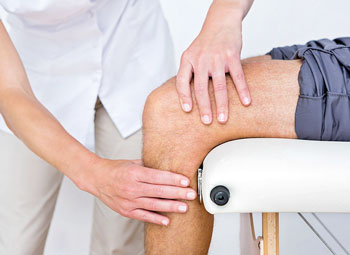15 Sep 2017 - {{hitsCtrl.values.hits}}
 During activities done at home, at your workplace or at the play ground, anyone may experience an injury. Some of these injuries are, bruises, straining of tissues, fractures or dislocations. When faced with an injury, treatment known as ‘RICE’ can be administered. Health Capsule spoke to Dr. Jaliya Uduwella, Chief Physiotherapist Lady Ridgeway Hospital Colombo & President Chartered Society of Physiotherapy, to educate readers on this type of treatment.
During activities done at home, at your workplace or at the play ground, anyone may experience an injury. Some of these injuries are, bruises, straining of tissues, fractures or dislocations. When faced with an injury, treatment known as ‘RICE’ can be administered. Health Capsule spoke to Dr. Jaliya Uduwella, Chief Physiotherapist Lady Ridgeway Hospital Colombo & President Chartered Society of Physiotherapy, to educate readers on this type of treatment.
 It is easy to remember when this treatment is explained in the following manner.
It is easy to remember when this treatment is explained in the following manner.
R - Rest
I - Ice
C - Compression
E - Elevation
First the injured area should be rested and not moved. Secondly get some ice cubes and wrap them in a peace of cloth. Use this now to foment the injured tissue. If there is internal bleeding or external bleeding, this treatment will help stop it. Nature of our body is such that vasoconstriction of the blood vessels occurs due to coldness. Then the flowing of blood will be stopped. Most people foment the injured area with hot water.
This shouldn’t be done. When hot water is used, blood vessels get dilated and blood flows further to the tissue, making the blood clot larger. But after three (3) days following the injury, fomentation can be done with hot water.
Most people fomenting the injured area with hot water. This shouldn’t be done. When hot water is used, blood vessels get dilated and blood flows further to the tissue, making the blood clot larger.
As soon as the injury occurs foment the are with ice. Then the injured area must be compressed with the injured tissue in mind. The injured are must be bandaged with a crape bandage or a piece of cloth to avoid swelling. When this treatment is administered tissue fluid doesn’t get accumulated. When using compression as part of the treatment the bandage should be tightened only to a certain extent. If during compression the bandage is tightened more, it may obstruct the circulation of blood.
Thereafter the related area should be kept above the patient’s heart. The blood flow to the injured tissue reduces due to gravity. Then the venous blood disappears from that area quickly. If there is any bleeding, this also is controlled.

If there is a suspicion of a fracture, keep the area immovable by tying a splint and then visit a doctor. Under any circumstance if the nerves get damaged, the patient’s condition may worsen. The injured area may become permanently damaged. Therefore, don’t attempt to readjust the broken bones or displaced joints at any time.
If there is suspicion of a fracture related to the vertebral column, it’s better to keep the patient on a board and take him to the hospital. Don’t allow the patient to sit. When carrying such patients get the support of at least four persons.

After removing the plaster, put in place by the doctor during the treatment process, the movement of the joint, that was inactive for some time, may be limited. One might be able to witness wasting of muscles. To prevent muscles atrophy, physiotherapy instructions should be followed. This process is begun early when the patient is wearing the plaster. Here static exercises could be done without damaging the fractured bone. Care must be taken to contract the muscles and not move the fractured bone. If the muscles have thinned when the plaster is removed, muscle strengthening exercises should be done. If the joint’s range of motion is limited suspension therapy, introduced in physiotherapy, can be given. This is done by moving the patient to a posture to do exercises without feeling the gravity. If the joint has stiffened, heat treatment should be administered before physiotherapy.
23 Dec 2024 2 hours ago
23 Dec 2024 3 hours ago
23 Dec 2024 6 hours ago
23 Dec 2024 7 hours ago